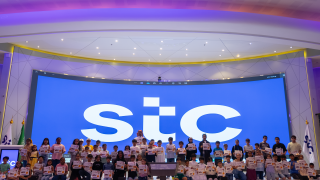The regulators has said that it is going to auction off two segments of 60 MHz of paired spectrum in the 2 GHz range and 300 MHz unpaired from the 3.6 GHz range.
Included in the proposal are the terms under which the frequencies will be allocated, for example there are requirements specifying where and at what time 5G networks should be built up.
The regulator said that it has based its proposal on the responses it received to its framework document on 5G spectrum that was released last year, as well as notifications for spectrum requirements it’s received from various parties.
The Federal Network Agency said that parties interested in the auction have a deadline of February 28th to submit comments and recommendations on the draft proposal, with the aim of holding the auction later this year.
The plan to auction off frequencies has received a lot of backlash from telecoms companies who say that the decision will them without the money needed to invest in the expansion of 5G networks. The German government on the other hand has said that it needs to raise the money in order to invest in the expansion of a nationwide gigabit network, said German daily Handelsblatt.
Deutsche Telekom are also quoted as warning the Federal Network Agency against driving up prices for frequencies "out of a political calculation", said Handelsblatt.
To date, telecoms companies have paid an average of €8.5 billion for Universal Mobile Telecommunications System (UMTS) frequencies in 2010 and over €60 billion in German state pockets over the last 17 years because of these auctions, said Markus Haas, the head of Telefonica Deutschland, to Handelsblatt.
Haas added that the auction “won’t work out” if the regulator begins another competitive auction for these firms and then demands that these companies invest in building a high-quality mobile network in rural areas at the same time.
In related news, Nokia and Telefónica Germany have entered into a Memorandum of Understanding (MoU) to from a joint 5G Innovation Cluster.
Under the terms of the agreement the two companies will come together to test network solutions and technologies that are on the path to 5G in Telefónica’s lab in Munich. This is to be shorty followed by trials in the operator’s live network, of which Berlin is the priority, with the objective of building a benchmark network with 4.5G, 4.9G and 5G technology.
Commenting on the news, Cayetano Carbajo, CTO of Telefónica Germany, said: “Our innovation collaboration in Germany follows a global agreement with Nokia to explore technologies on the path to 5G. Having access to Nokia’s latest portfolio will enable pre-testing and understanding new technologies thus helping us to further enhance the user experience in our network.”
Nokia will focus on technologies that maximise the use of existing network assets and help Telefónica meet growing demands and explore new business opportunities.
Marc Rouanne, president of mobile networks at Nokia, added: “This joint Innovation Cluster is a manifest of our long-standing excellent relationship. We have a strong presence in Telefónica’s radio network in Germany and it is important that we work jointly to innovate on the path to 5G, preparing the network for future demand and business opportunities.”
The main technologies from Nokia that are to be included the 5G Innovation Cluster, are: Massive MIMO for high-throughput, multi-access Edge Computing (MEC) for Ultra-Reliable Low latency Communications (URLLC). In addition, the other is to deliver an immersive virtual reality video experience to places like stadiums or at tourism sites.





